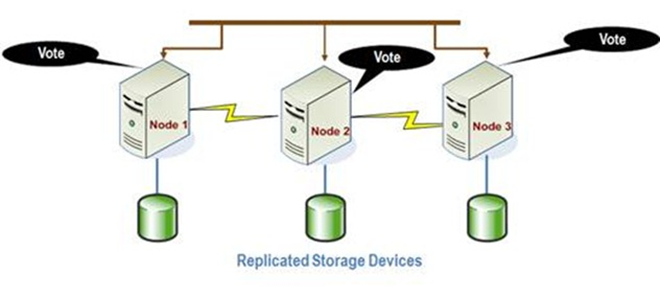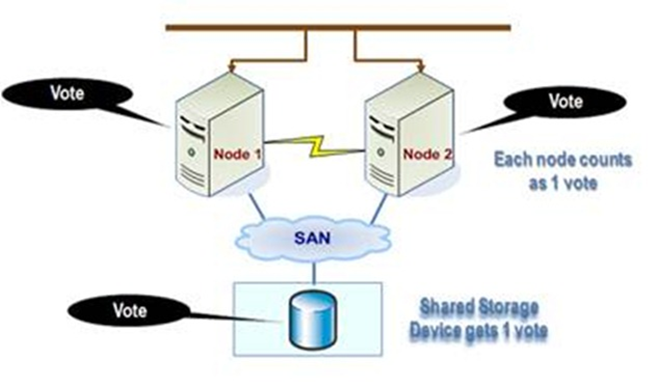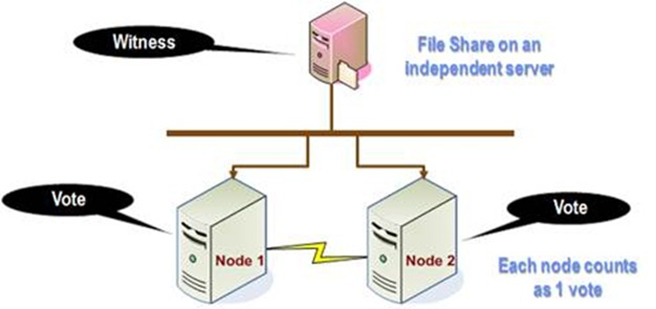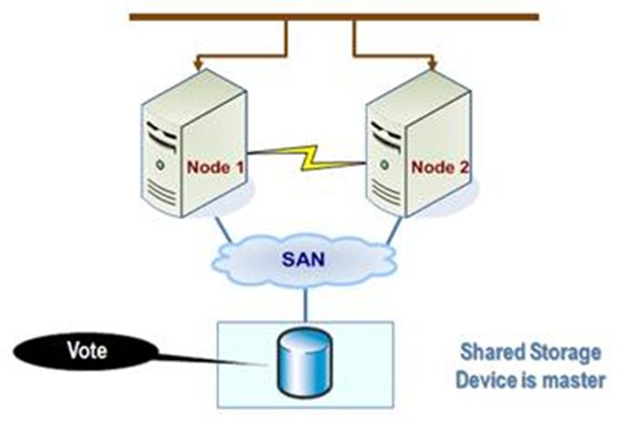Windows Server Failover Clustering Quorum Configuration Models Explained
Written by Cheng Pei Koay, Microsoft Premier Field Engineer.
A Windows Server 2008 failover cluster is known to provide high availability for various types of back-end applications and services (note that failover clustering is designed for stateful applications). A common perception is to having 2 nodes clustered will accomplish the required level of high availability; however, Windows Server 2008 / Windows Server 2008 R2 failover clustering encourages you to have a higher number of nodes to decrease the probability of failures. From the table below, an example of the probability of failure for an 8 node cluster of servers is 12%.
Node |
Passive Node |
Probability |
2 |
1 |
50% |
3 |
1 |
33% |
4 |
1 |
25% |
5 |
1 |
20% |
6 |
1 |
16% |
7 |
1 |
14% |
8 |
1 |
12% |
Quorums play a key role in cluster functionality. A good definition of quorum resources can be found here, repeated here for your convenience:
Server clusters require a quorum resource to function. The quorum resource, like any other resource, is a resource which can only be owned by one server at a time, and for which servers can negotiate for ownership. Negotiating for the quorum resource allows Server clusters to avoid "split-brain" situations where the servers are active and think the other servers are down. This can happen when, for example, the cluster interconnect is lost and network response time is problematic. The quorum resource is used to store the definitive copy of the cluster configuration so that regardless of any sequence of failures, the cluster configuration will always remain consistent.
Quorum Configuration Choices
Failover Clustering can be configured in one of four quorum models.
1. Node Majority
The Node Majority mode assigns votes only to the cluster nodes, which means that if the cluster becomes partitioned then the partition must have more than half the number of nodes in order to offer these services. Node Majority works best and is recommended if you have an odd number of nodes. Having a scenario with an even number of nodes is better suited for disk or file share witness modes.
2. Node and Disk Majority
In the Node and Disk Majority mode, each node has a vote as well as a shared disk called the disk witness. This mode is preferable in situations with an even number of nodes that have shared storage available. For example, if you have four nodes that become equally partitioned then only one of the partitions can own the disk witness, which gives that partition an additional vote. The partition that owns the disk witness can therefore make quorum and offer services.
3. Node and File Share Majority
The Node and File Share Majority mode works in exact same way as the Node and Disk Majority mode with the exception that the disk witness is replaced with a file share. This mode is recommended if you have an even number of nodes and you don't have shared storage available.
4. No Majority: Disk Only
The final cluster has quorum if one node is available and this node is in communication with a specific disk in the cluster storage. Only the nodes that are in communication with that disk can join the cluster.



